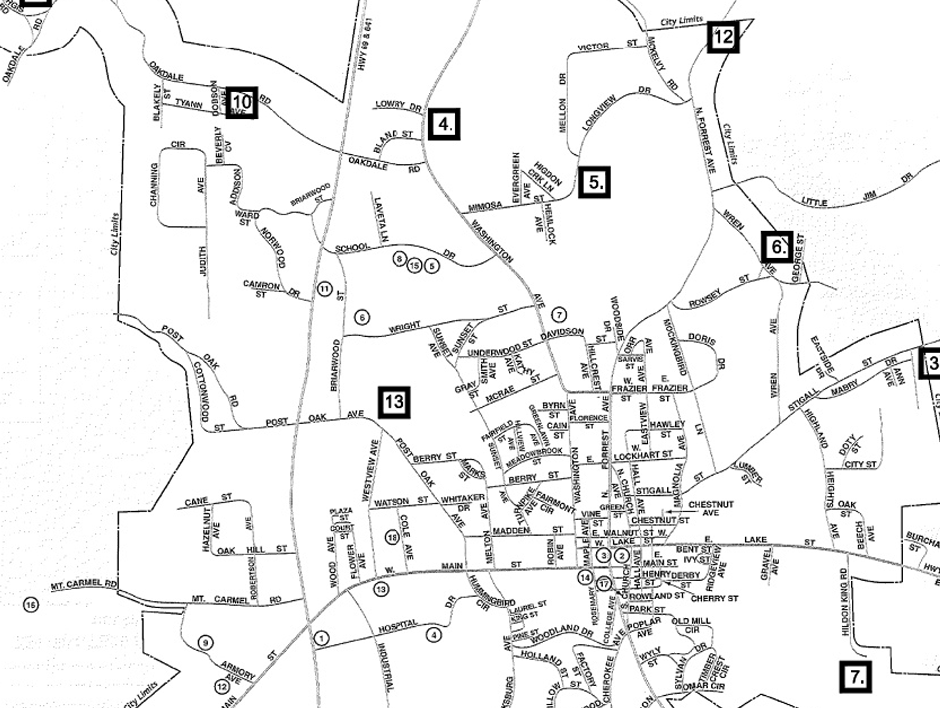Sewer Rehabilitation
Successful Federal Disaster Relief Program grant application for sewer system upgrade to reduce excessive I/I for City of Camden, Tennessee.CIA Engineers provided grant application assistance, preliminary engineering, construction documents, and construction administration for rehabilitation of Camden’s sanitary sewer collection system. The grant was funded by the Federal Disaster Relief Program.
Background
Much of Camden’s collection system was constructed prior to 1960 utilizing vitrified clay pipe and brick manholes. There were 13 lift stations throughout the City, none of which possessed remote monitoring or backup pumping capability. Due to the age and obsolescence of the system, excessive infiltration and inflow (I/I) permeated the system resulting in periodic overflows at the wastewater treatment plant (WWTP). At times the average daily flow at the WWTP was more than twice the permitted flow, and the highest flows were nearly 10 times greater than the theoretical average baseline flow. Maintenance and replacement could not be adequately prioritized, scheduled, or accomplished due to the lack of real-time data about on-site conditions within the pipe, manholes, and pump stations.
Grant Application
CIA Engineers provided preliminary engineering for rehabilitation of the system and prepared an Application and Preliminary Engineering Report for the Federal Disaster Relief Program. The application was successful, and grant monies were issued for $650,000.
System Inspection, Design Documents and Construction Administration
Following the approval of the application, CIA Engineers initiated two major tasks: 1) prioritizing the system to determine the areas of highest I/I, and 2) developing construction documents for system rehabilitation in the highest priority areas. The prioritization task included internal pipe inspection through video surveillance as well as smoke testing and flow monitoring. This resulted in the identification of high-priority areas to be rehabilitated first. The rehabilitation task consisted of installing a SCADA system for the pumping stations, modification of the 13 pumping stations to accommodate a new portable sewage pump to provide backup at any of the stations, pipe rehabilitation through cured-in-place piping (CIPP) or through replacement, manhole lining or replacement, and rehabilitation and upgrades to the Good Samaritan pumping station.

